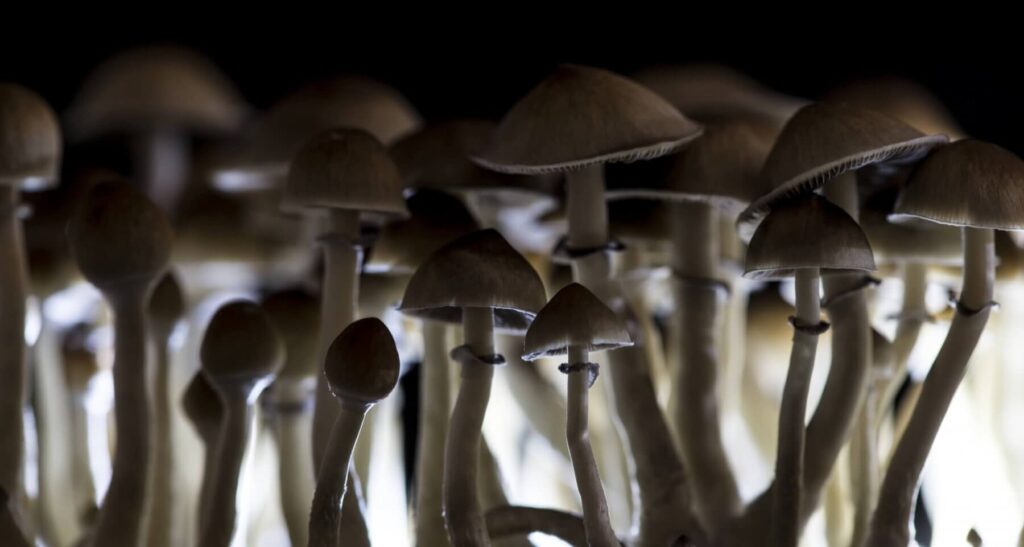Understanding Hallucinogens: Risks, Addiction, and Treatment
Hallucinogens have a long history as substances that change how the brain interprets reality, causing sensations and perceptions that don’t exist. These substances are often derived from plants like certain cacti, mushrooms, and cannabis, but can also be synthesized in laboratories.
Hallucinogens are linked to mood disorders, anxiety, personality shifts, and other mental health issues, and can result in severe, sometimes life-threatening, effects. Learning more about these substances and their potential risks may help prevent individuals from facing irreversible consequences.

Defining Hallucinogens
Hallucinogens, also known as “psychedelics,” fall into three main groups: psychedelics, dissociatives, and deliriants. They interact with brain chemistry, distorting the user’s sense of reality, and are associated with mental health challenges.
These drugs are classified as Schedule 1 substances under the Controlled Substances Act, meaning their manufacture, possession, and distribution are illegal due to their high potential for misuse and lack of accepted medical applications.
Throughout history, hallucinogens have been used in cultural rituals, religious practices, and medical research. Indigenous communities have used plants like peyote and ayahuasca for healing and spiritual purposes, while the 20th-century counterculture explored substances like LSD to reach altered states. New research suggests potential benefits for mental health treatment, though earlier studies faced challenges. Social views on hallucinogens vary widely, with some societies stigmatizing them while others embrace their ceremonial or recreational use.
Common Hallucinogens
Many types of hallucinogens are used for various purposes, from ceremonial and therapeutic use to recreation. Here are some of the best-known hallucinogens:
•LSD (Lysergic acid diethylamide): Known as acid or blotters, LSD often comes as thin, transparent squares. Among the most powerful hallucinogens, its effects can last for hours, leading users to see and feel things that aren’t there, sometimes causing severe anxiety or depression after use.
•Psilocybin (Magic Mushrooms): Extracted from specific fungi, psilocybin has been used historically in religious ceremonies and is now commonly used recreationally, often ingested or brewed into tea. Its effects are similar to LSD, and its legality varies, with concerns over possible overdose from improper use.
•MDMA (Ecstasy/Molly): Popular at parties, MDMA is known for creating intense feelings of joy and sociability. However, it has a high risk for addiction and can lead to significant mental health issues, especially with regular use.
•Peyote/Mescaline: Traditionally, peyote has been used in spiritual ceremonies, either chewed, brewed, or smoked. Mescaline induces euphoria but often brings side effects like nausea, anxiety, rapid heart rate, and altered perception.
•DMT (Dimethyltryptamine): Found in plants like ayahuasca or synthesized in labs, DMT causes intense hallucinations, which can range from pleasant to terrifying. Its production, possession, and sale are prohibited due to its potent effects.
•Marijuana (Cannabis): Cannabis remains the most accessible hallucinogen, with shifting legal status. Despite medicinal use, cannabis poses risks, including altered perception and reduced motor coordination, especially for those in recovery, as it carries a risk of misuse.

Common Dissociative Hallucinogens
Dissociative hallucinogens represent a unique category of mind-altering substances that create sensations of separation from one’s body, emotions, and environment, resulting in out-of-body experiences. Here are some of the most widely encountered dissociative hallucinogens:
•Phencyclidine (PCP): Initially developed as a surgical anesthetic, PCP was later abandoned for medical use due to its toxic properties. It is now recognized as one of the most hazardous abused drugs, producing numbness, intense hallucinations, and a sense of detachment from both one’s body and surroundings.
•Ketamine: Used in medical settings as an anesthetic for both humans and animals, ketamine has found illicit recreational uses. Its effects can range from calming relaxation to complete memory loss. Due to its misuse, it is often used as a drug in cases of sexual assault when slipped into drinks.
•Dextromethorphan (DXM): Frequently found in over-the-counter cough medications, DXM is accessible and affordable, making it popular among adolescents. Although intended for cough suppression, abuse of DXM leads to hallucinatory effects and a sense of dissociation from one’s own body.
•Salvia divinorum: Also known as “magic mint,” this plant grows in parts of Southern Mexico, Central America, and South America. It can be consumed by chewing fresh leaves, ingesting the juices, or smoking or vaporizing dried leaves. Now available online, salvia can induce powerful hallucinations and a feeling of self-detachment.
Effects of Hallucinogens
Short-Term Effects
The effects of hallucinogens can be immediate, impacting physical, mental, and sensory experiences. While responses may vary, common effects include:
•Physical Effects:
•Fluctuating heart rate
•Increased blood pressure
•Elevated body temperature
•Nausea and vomiting
•Heavy sweating
•Pupil dilation
•Muscle tremors
•Psychological Effects:
•Altered sense of reality
•Intense mood shifts
•Difficulty concentrating
•Memory problems
•Euphoria
•Heightened anxiety
•Confusion
•Sensory Effects:
•Vivid, intense hallucinations
•Perceiving sights, sounds, and sensations that are unreal
•A sense of disconnection from one’s body and thoughts
Long-Term Effects
Long-term hallucinogen use can have serious consequences on both physical and mental health:
•Physical Health Complications: Persistent use may lead to health issues like hallucinogen-persisting perception disorder (HPPD), where hallucinatory effects occur long after drug use has stopped. Chronic use can also lead to cardiac, respiratory, and kidney problems, contributing to an overall decline in physical well-being.
•Mental Health Concerns: Hallucinogens can worsen or initiate underlying conditions, such as depression, bipolar disorder, or schizophrenia. Long-term use may heighten the risk of lasting psychosis or other mental health disorders.
•Addiction Potential: Although hallucinogens are not typically considered physically addictive, users may develop a psychological dependence, especially if used to avoid reality or cope with stress. This dependence can disrupt daily life and lead to compulsive drug-seeking behavior.
What Are the Effects of Hallucinogens?
Mechanism of Addiction
Dependency vs Tolerance
Psychological vs Physical Addiction
Are Hallucinogens Addictive?
While hallucinogens may not cause physical dependency, they can lead to a psychological reliance. Understanding how addiction forms with hallucinogens helps in addressing this complex issue.
Mechanism of Addiction
Research is still uncovering the details of how hallucinogens affect the brain’s reward pathways. Most hallucinogens primarily impact serotonin receptors, which are involved in mood, memory, and feelings of well-being. Over time, users may seek to recreate the initial euphoric effects, but as tolerance builds, higher and more frequent doses become necessary, creating a cycle of increased use to reach the same experience.
Dependency vs. Tolerance
In the context of hallucinogens, tolerance means the body’s response to the drug lessens over time, leading individuals to increase their dosage to achieve similar effects. Dependency, on the other hand, describes a reliance where users continue despite harmful consequences, often to sustain positive effects or avoid withdrawal discomfort.
Psychological vs. Physical Addiction
Psychological addiction involves a compulsive need to use the substance despite negative impacts. This form of addiction includes strong cravings and an obsession with the substance. Physical addiction, common with other drug types, involves bodily adaptation, where tolerance and withdrawal occur. Hallucinogens generally lead to psychological dependence rather than physical addiction, with users often feeling a compelling need to use the drug for mood enhancement or stress relief.
Signs of Hallucinogen Addiction
Signs that someone may be struggling with an addiction to hallucinogens can appear in several ways:
•Behavioral Indicators: Acting secretively, neglecting obligations, withdrawing from social interactions, or taking risks, even illegal ones, to access or use hallucinogens.
•Physical Symptoms: Though hallucinogens are not usually tied to physical addiction, symptoms like enlarged pupils, rapid heart rate, sweating, muscle tremors, appetite reduction, or trouble sleeping may still manifest.
•Psychological Signs: Cravings, fixation on obtaining and using hallucinogens, mood instability, irritability, heightened anxiety, paranoia, and impaired decision-making.
Treatment for Hallucinogen Use Disorder
Treatment for hallucinogen use disorder typically combines several approaches:
•Detoxification: Although hallucinogens generally don’t lead to physical addiction, medically supervised detox may help manage any discomfort or withdrawal symptoms. This process ensures the substance is safely cleared from the body.
•Behavioral Therapies: Therapies such as cognitive-behavioral therapy (CBT), motivational interviewing, and contingency management are effective in helping individuals understand their patterns, cravings, and triggers. These therapies develop coping skills, promote healthy behavior changes, and address underlying causes.
•Support Groups and Counseling: Engaging in support groups like Narcotics Anonymous (NA) or individual counseling offers essential, ongoing support and accountability. Counseling also addresses mental health concerns and builds resilience in handling challenges.
•Medications: Although no specific medication is approved for hallucinogen use disorder, doctors may prescribe medication to help with co-occurring issues like depression, anxiety, or PTSD, which can influence substance use patterns. Medications may also ease withdrawal symptoms or curb cravings related to other substances used with hallucinogens.
Frequently Asked Questions
Frequently Asked Questions (FAQs) on Hallucinogen Use, Risks, and Treatment
How do hallucinogens differ from other drugs like stimulants or depressants?
Unlike stimulants or depressants, hallucinogens alter perception, making users experience sights, sounds, or sensations that aren’t actually present. Stimulants, such as caffeine or methamphetamine, boost brain activity, increasing energy and alertness, while depressants like alcohol or benzodiazepines slow down brain functions, leading to relaxation or sedation. Hallucinogens, however, uniquely impact sensory perceptions, creating altered realities rather than merely speeding up or slowing down brain activity.
Are there any medical uses for hallucinogens?
In certain cases, specific hallucinogens have been approved for pain management, anesthesia, and the treatment of mental health disorders, including PTSD and depression. Though some research shows promise for these drugs, they remain heavily regulated in many regions under Schedule I status, limiting their legal application in clinical settings.
How do hallucinogens interact with other medications or substances?
Mixing hallucinogens with other drugs can increase risks significantly. When combined with other hallucinogens, the chance of experiencing Serotonin Syndrome rises, causing symptoms like agitation or severe mental distress. Mixing them with alcohol can also lead to toxicity and heightened accident risks, making combinations of hallucinogens with other substances potentially dangerous.
Can hallucinogens lead to overdose?
While hallucinogens generally aren’t associated with fatal overdoses, high doses can still trigger severe adverse reactions. Effects may include intense nausea, dehydration, episodes of psychosis, and emotional distress. Even though overdose deaths are uncommon with hallucinogens alone, taking large amounts can lead to dangerous situations.
Are there any legal hallucinogens?
The legal status of hallucinogens depends on the specific substance and location. Many places, such as the U.S., categorize most hallucinogens as controlled substances, making them illegal. However, some naturally occurring substances with hallucinogenic properties, like ayahuasca, peyote, kratom, and salvia divinorum, are in a legal gray area. Since these laws vary and may evolve, it’s essential to stay informed about regulations in your area.
Are there any natural sources of hallucinogens?
Yes, plants and fungi are natural sources of hallucinogens, including psilocybin mushrooms, peyote cacti, and ayahuasca vines. Used historically in ritualistic and healing practices, these plants produce significant changes in perception and are often associated with spiritual experiences.
How prevalent is hallucinogen use today?
Use of hallucinogens has been on the rise, particularly among young adults. Recent data in the U.S. shows non-LSD hallucinogen use nearly doubled among 19 to 30-year-olds between 2018 and 2021. Many users are drawn to these substances for spiritual exploration, social interaction, or personal insight, reflecting a growing cultural interest in altered states of consciousness.

